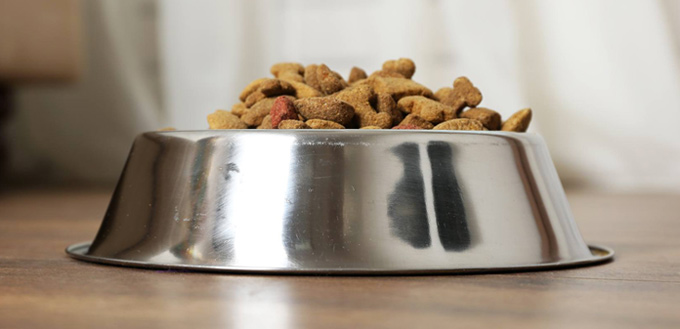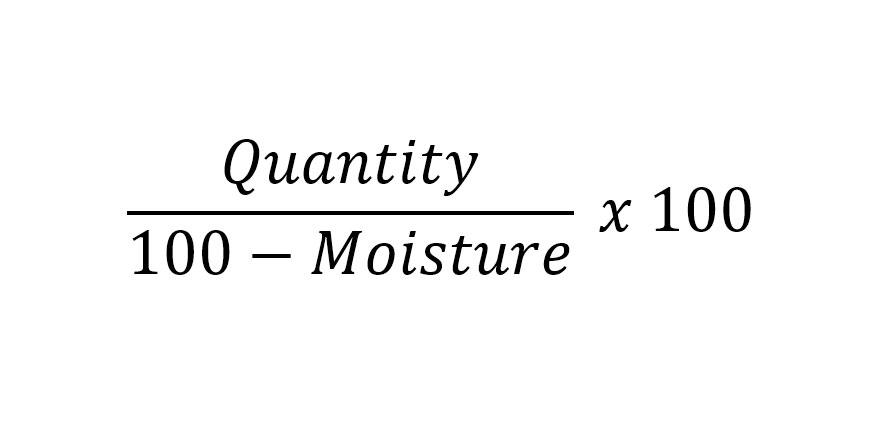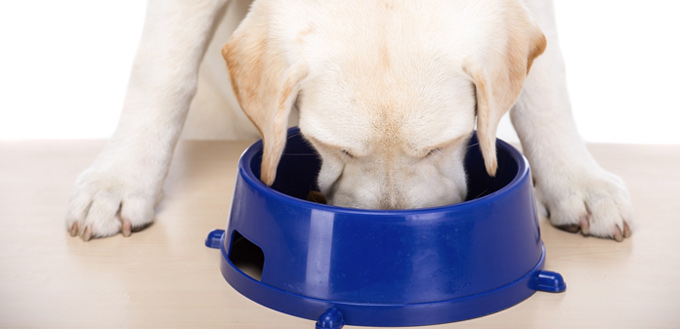Our pet dogs expect us to give them only the highest possible quality of food that their bodies need. Since we have domesticated them, part of their instinct to hunt and forage for food in the wild has been substantially suppressed, relying on our good judgment to provide them with the kind of nutrition that Mother Nature would want them to have. Sadly our judgment on what constitutes the best dog food is sometimes muddled with socio-cultural and economic influences that dog nutrition is increasingly divisive. In this article, we shall attempt to look much deeper into the process of choosing the right type of dog food for our pups so that we’ll feel more secure in our decisions later on.
The Different Types of Dog Food
Choosing high-quality dog food from an ocean of varying options can be very intimidating. That is why we must start our journey by understanding the different types of dog food, what they are, and what they are primarily intended for.

Dry Kibbles
This dog food is one of the most common and technically practical diets for our beloved hounds. It is the perfect solution for pet parents who don’t have the time to prepare or cook exclusive dog food for their pets or those without adequate knowledge about the ideal nutrition for their dog breed. It is also the ideal solution for pet parents who may be cash-strapped but still want to give their puppies the best.
Dry kibbles have the added benefit of not spoiling easily, so it is the choice of many pet parents who will leave the house for an extended period. They can fill the food bowl with dry kibbles and leave it for their dogs to eat whenever they feel hungry. Unfortunately, you cannot say the same thing for the bag of dry food. Once you open the bag, its nutrient value diminishes significantly within 14 days. As such, while it may be more practical to get a large bag of dry kibbles for your pet, if it will not be able to consume it within two weeks, then you’ll be unable to give the right nutrients from the 15th day onwards.
There is another thing going for dry kibbles. Because they have a rough texture, they can serve as your pup’s toothbrush. As the kibbles are broken down into smaller bits with your dog’s chewing, these scrape against the surface of the teeth and the gums, effectively removing tartar and plaque that may have built up in these areas. Again, this is one way to maintain optimum dental and oral care among pooches.
Sadly, dry kibbles don’t carry that much moisture, with most brands typically carrying a maximum of 10 to 12 percent moisture in their formulations. This means that if your dog is not drinking well or is sick and needs adequate hydration, then dry kibbles may not be the perfect food for it.
Related Post: Nulo Dog Food
When it comes to nutrition, dry kibbles are known to be excellent sources of energy. A typical high-quality dry dog food will typically come in at 500+ calories per cup with a guaranteed analysis of 30% and 10% minimum crude protein and crude fat, respectively.
Related Post: Cesar Dog Food
Canned
One of the strengths of canned food is its exceptionally long shelf life. This means they can stay edible and nutrient-rich as long as they are sealed. Once opened, however, you’d have to be fast in letting your dog consume it. Otherwise, it will spoil. If refrigerated, an opened can of dog food lasts about a week. But if you let it sit in your dog’s food bowl, it will spoil in as short as 4 to 6 hours.
Canned dog foods are very palatable. That’s why many dogs love these kinds of canine pet food. The downside is that these are generally more expensive than dry kibbles on a per-weight basis. However, they are perfect for young puppies because of their softer consistency. It is also ideal for sick dogs, especially those taking medications that can substantially affect their taste buds. In addition, the naturally more flavorful formulation of canned dog foods can help improve appetite by making it more palatable.
Canned dog food is also indicated in canines that may no longer have teeth or are too weak to chew on dry kibbles, as well as those dogs already in their twilight years. It is also perfect for canines that do not drink water that much or are too weak to drink from their water bowls or water dispensers.
Typical canned dog food contains anywhere between 70 and 80 percent moisture which proponents of canned dog food say closely mimics the moisture content of prey animals that wild dogs have been known to devour. Sadly, this same moisture content is what detractors of canned dog food are highlighting as being its downside since more moisture means fewer nutrients. We will shed light on this later on in this article.
Suffice it to say, if dry kibbles are known for being energy- or calorie-dense, canned dog food is known to be protein- and fat- dense. While this is true, you should note that not all manufacturers of canned dog food will use easily digestible proteins in their formulations. So, if there are significantly more indigestible proteins, what is the use of putting proteins into a dog food if your dog cannot digest and absorb them? As such, it is imperative to look into the ingredients of the dog food, be it dry or canned.
Semi-moist
Sitting comfortably between dry and wet (or canned) dog foods is semi-moist dog food. These are called semi-moist since they have substantially greater moisture content than dry dog foods but lesser moisture than wet or canned dog food, usually rated at anywhere between 60 and 65 percent.
The bad news is that many of these dog foods contain higher levels of sugar and salt than the other commercially available dog foods. These are also filled with artificial colorings and flavorings that may be detrimental to your pet’s health. Therefore, veterinarians do not recommend these dog foods except in certain instances.
One of the instances that semi-moist dog food can be advantageous is during dog training. Because it is softer than a kibble, your pooch can easily munch it down much faster. And since it is firmer than wet or canned dog food, you can easily hold it in your hand and feed it to your dog. However, its use should only be limited as a treat, not as part of your dog’s regular meals.
Home-cooked
As the name implies, this type of dog food is meticulously prepared by pet parents. It involves choosing only the right and pet-safe ingredients to cook. It is time-consuming and will often come out as the most expensive type of dog food since you would want to use only the safest and highest quality ingredients for each meal. Additionally, spoilage is a real risk.
However, the sense of fulfillment one can have from studying canine nutrition and preparing and cooking meals for your furry friend can never be duplicated by any other type of nutrition. This is where your love for your dog will be tested, as you will need to understand the ins and outs of optimum canine nutrition clearly. The key here is to spread your dog’s nutrient requirements from various food sources without necessarily sacrificing its health and safety.
Raw
If you’re an avid fan of the Paleo Diet, then giving your dog raw food is simply the best option. This diet emphasizes the closest possible diet to ancestral dog food, where canines of yore had to forage and hunt for plants and prey animals, respectively. As a result, no cooking is needed, although you are also expected to prepare these ingredients.
An excellent raw dog diet typically includes 15% bones, 10% organ meats, 50% lean meats, no more than 5% fat, a good serving of wholesome fruits and vegetables, and minimal starchy foods, if at all. So if you can get your dog whole rabbit, poultry, or fish, then you can already be sure that your pooch is getting all the right nutrients its body needs.
However, it is important to talk to your vet if you decide to shift to raw dog food.

Things to Look for in a Label
Now that we understand the different types of dog food, you should already know what type of dog food is best for your pet. However, you should not stop there. Just as pet parents who prepare home-cooked dog foods for their pets have to learn about canine nutrition, you should also learn to read what the label means in commercially-available dog foods. Here are the things you have to look for and carefully understand.
Related Post: Earthborn Holistic Dog Food
Guaranteed Analysis
We mentioned above that dry dog foods are rich in calories and wet or canned dog foods are rich in proteins and fats. Therefore, commercially-available dog foods will always come with a guaranteed analysis which is a rough estimate of the nutrient composition of the dog food.
At first glance, it would seem that dry dog food will have more nutrients than canned dog foods. For instance, typical dry dog food will have a minimum of 30% proteins and 10% fats. On the other hand, high-quality wet dog food will have about 10% proteins and 4% fats at the very minimum. So naturally, 30% and 10% are greater than 10% and 4%, right?

Let us try to do some math. First, since guaranteed analysis considers the moisture or water content, you should compute only the dry weight matter of wet or canned dog food.
If the serving size of canned dog food is 10 ounces and contains 10% proteins and 75% moisture, then we can say that the dry weight matter of such a dog food is only 25%. Since protein is a part of this dry matter, you need to divide it by the total weight of dry matter.
Hence, we divide 10 percent by 25 percent and multiply it by 100 to give us 40 percent. As such, the actual protein content (40%) of the canned dog food is higher than the protein content printed on the label (10%).

Now compare this to our hypothetical example above wherein the dry dog food has 30% protein, and the canned dog food has 10% printed on the label, the actual computed protein content of the wet dog food as per dry matter weight basis of 40% is greater than 30%.
When it comes to calories, well, there’s no denying that dry dog food has more calories than wet dog food. Typical dry dog food will have about 400 to 500 calories per serving, while wet dog food will have anywhere between 250 and 350 calories per serving. Why is there so much discrepancy?
This is where carbohydrates come in. Producing wet or canned dog food is not only labor-intensive but is also very expensive. Manufacturers of dry dog food cannot afford to fill their formulations with only premium quality meats. They use carbohydrates to help reduce costs and bind everything together. Sadly, this use of carbohydrates gives dry kibbles their high-calorie formulations.
Wet dog food also contains carbohydrates but in sufficiently lesser quantities. And since moisture doesn’t contain calories, wet dog foods can maintain their low-calorie formulation.
If you have a pup that is a working dog breed or has a very physically active lifestyle, then the best dog food will have to be dry kibbles. However, if you have a pooch that requires more protein and fewer calories in its diet, then wet or canned dog foods are the way to go.
You May Also Like: Best Dog Food Brands
The First Ingredient Should Always Be an Animal Protein
We mentioned above that dogs require easily-digestible proteins. While science has shown that the digestive systems of modern-day dogs have evolved tremendously to accommodate almost any other type of food molecule, some nutrients are more difficult to process than others. Plant food, for instance, will take substantially longer for the gut to process it and break it down into its component macro-nutrients. Additionally, certain essential amino acids are missing in plant sources that dogs need for various tissue-building processes and hormone- and enzyme- synthesis.
Animal proteins come complete with the essential amino acids for cellular health and nucleic acids essential for genetic transmission. That being said, it is important to read the label and look at the list of ingredients. These ingredients are listed in order of weight, so the first ingredient naturally has more weight than the rest. Therefore, the first ingredient must be animal protein. This is the single most important thing you need to look for in the ingredient list; unless, of course, the dog food specifically says that it contains plant proteins as its principal ingredient.
Some experts say you should always go for animal meals as they contain more nutrients than fresh animals, which typically contain more moisture. As such experts recommend going for chicken, beef, lamb, or fish meal as the first ingredient instead of real chicken, beef, lamb, or fish.
It is also important that the animal protein is specifically identified. For instance, instead of saying poultry meal, you should use real chicken, turkey, or pheasant meal. The point is that you should be able to identify the exact kind of animal protein you are giving to your canine friend.
Wholesome Grains, Vegetables, and Fruits
You might be inclined to believe that dogs don’t need fruits and vegetables and wholesome grains, but they do, albeit in moderate amounts. The nutrients, especially phytochemicals, antioxidants, and flavonoids that these food ingredients contain, can also help promote overall health for your pet pooch. If you’re wary about soy, corn, or wheat, you can skip these for rice, sweet potatoes, and peas, although these should not comprise the bulk of your puppy’s diet since starchy foods can promote insulin spikes.
Related Post: A Guide to the Fruit and Veg Your Dog Can and Can’t Eat
Watch for ‘Organic’ and ‘All-Natural’ Labeling
Many dog food manufacturers today put ‘organic’ and ‘all-natural’ on their labels. If the manufacturer puts ‘organic’ on its label, then 95% of its ingredients should be organic, excluding water or salt. If the label says that the dog food contains ‘organic ingredients’, 70% of these must be organic. Anything less does not justify the putting of ‘organic’ on their labels.
Related Post: Whole Earth Farms Dog Food
AAFCO Nutrient Profile
There are dog foods that come with AAFCO labels. Some read “All Life Stages” while others are labeled as “Adult Maintenance”. The former (ALS) typically contains more calories, phosphorus, and calcium and is generally indicated for lactating dogs and growing puppies. The Adult Maintenance formulation is basically for healthy adult dogs.
Things to Avoid
If there are things you should always look for in the best dog food, there are also things that you should avoid to come up with the highest possible quality of canine chow. These can include the following.

Low-quality Byproducts
Some pet food manufacturers say that you should avoid byproducts at all costs. But if you’re a firm believer in the ancestral diet of dogs, then you know that wild dogs eat everything from hair to skin to bones and all. So, unfortunately, there is no way we can safely say that the ingredients put into meat byproducts used in dog food are safe.
While some pet food manufacturers only include the kidneys, lungs, heart, bones, and livers of animals as byproducts, others may include fur, hide, nails, and other stuff that may be too gross even to contemplate. As such, if you think you should give your pooch meat byproducts, ensure you get only the products of reputable companies. Otherwise, it is best to avoid these altogether.
Generic Fat Source
If you see ‘animal fat’ on the label, will you not ask yourself what kind of animal the fat was sourced from? It could very well be fats derived from buffaloes or even roadkill. On the other hand, if you see poultry fat instead of animal fat, then at least you know that the fat comes from poultry products. However, a more definitive label is chicken fat. The point is that, like in animal protein, it is imperative that you can clearly identify the source of the fat and not just some vague living organism.
Anything Artificial
From sweeteners to flavor-enhancers to preservatives, always say ‘no’ to anything and everything artificial. But if the label reads rosemary extract, vitamin C, and tocopherols as the product’s source of preservatives, then it should be relatively okay. Likewise, Ethoxyquin, BHT, BHA, and other artificial ingredients typically used in food processing should be avoided at all cost as the detrimental effects to your pet’s health far outweighs any perceived benefits related to longer shelf life and increased palatability. After all, we are talking about high-quality dog foods here.
Picking a high-quality dog food starts with understanding the different types of canine nutrition, the pros and cons of each, and how each type can be used on specific types of dogs. Your choice of the best dog food should also reflect an understanding of what you have to look for in the labels and what you need to avoid. These can help you narrow your choices to just a few dog foods that should be the best for your pet.
You May Also Like: Lamb Dog Food
Sources:
- Anna Burke, How to Choose the Best Dog Food, American Kennel Club
- Amanda MacMillan, 6 Things Your Vet Wants You to Know About Dog Food, WebMD




